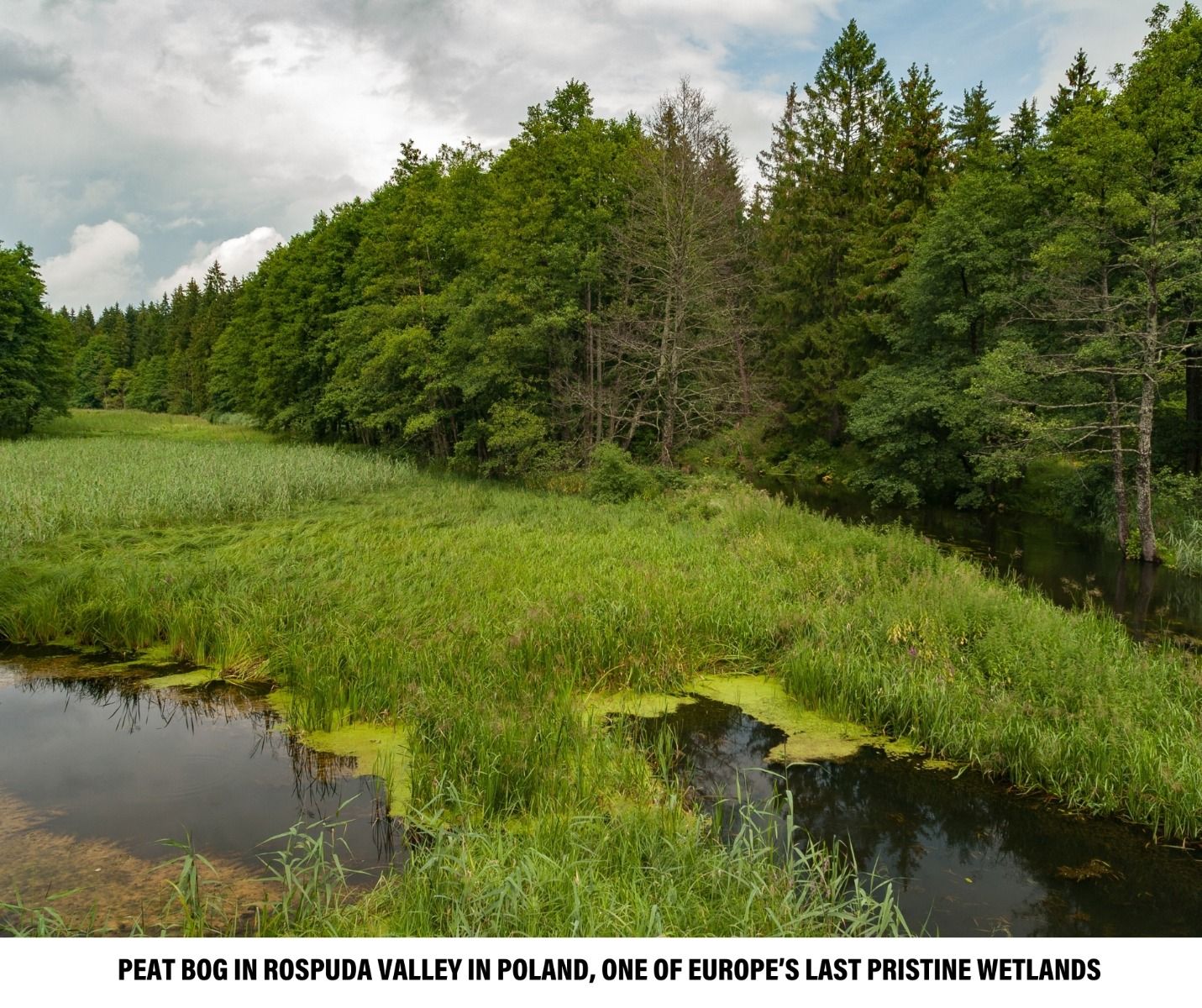The under-appreciated superheroes, exceptionally proficient in the fight against climate change… WETLANDS. They are very effective at storing large amounts of carbon dioxide. By absorbing and holding water they also prevent flooding. On hot days they slowly release the moisture, and through evaporation they prevent other areas from drying out. At the same time they are associated with the life of hundreds of thousands of unique and endangered species.

Peatlands cover an area of about 3% of Earth’s landmasses and contain twice as much carbon as all forests combined (forests cover an area of around 30% of the continents). These are also some of the most rapidly eradicated ecosystems in our climate zone. When they dry out they become a significant source of carbon dioxide and nitrous oxide. On a global scale the degraded peatlands emit the equivalent of about 5% of man-made emissions.

Cumulus & Centre for Wetland Conservation
Therefore, starting from this year, we are going to support Centre for Wetland Conservation in their actions for the protection of wetlands in Poland. This is just the beginning, but we can already see how much needs to be done! Especially since Poland is high up on the list of countries with the greatest carbon dioxide emissions caused by drying wetlands:
Around 90% of peatlands in Poland have dried up. Because of that, over 30 million tonnes of carbon dioxide are being released into the atmosphere, which constitutes about 10% of the total reported emissions of greenhouse gasses in Poland. One hectare of dried out peatland used as meadows or pastures emits 20-30 tonnes of carbon dioxide every year, which is as much as when travelling 200 thousand kilometres by car. In order to eliminate these emissions it is necessary to restore the previously dried peatlands by stopping the outflow of water into drainage ditches. Peatlands which are heavily used for agriculture constitute only a few percent of all farmland, so they should be exempt from intensive farming or replaced with cultivation of peatland plants – paludiculture.
Wiktor KotowskiCentre for Wetland Conservation
Let’s restore their superpowers!
For the longest time we have been searching for a way to effectively protect wildlife in our region. Our support is going to lead to the protection of wetlands in order to preserve their unique character and so that we can be sure they remain exclusively natural. Furthermore, we are all going to help make sure that the dried peatlands regain their awesome capabilities:

“Well-preserved peatlands in Poland are very scarce, and those with conditions resembling their natural state are rare gems. They need to be looked after so that they don’t share the fate of most peatlands – dried out and transformed into farmland or used for building development.” says Ewa Jabłońska from Centre for Wetland Conservation.
We will share more details soon!

We support this project as a member of 1% for the Planet initiative, which encourages companies to take positive actions and protect our home planet. 1% of sales from all our products goes back to support organizations working for environmental protection. We’ve also joined the European Outdoor Conservation Association, an initiative of the European outdoor industry to protect wild areas. Find out more:

Sources:
-> website bagna.pl
-> Wiktor Kotowski, 2021, Estimation of greenhouse gas emissions from the use of organic soils in Poland and the potential for their reduction. Report of the WWF Foundation and the Centre for Wetland Conservation.





